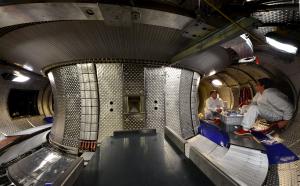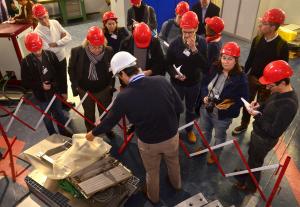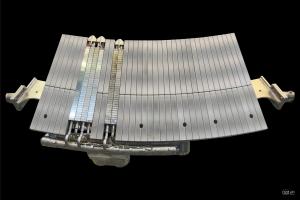ITER-like WEST ready to go
Imagine a space shuttle "landing" on—or rather flying very close to—the surface of the Sun. The heat load it would be exposed to would be in the range of 10 to 20 MW per square metre. Speaking to media representatives last week, Alain Bécoulet, the Director of the French Institute for Magnetic Fusion Research IRFM, used this very image to convey the extraordinary challenge that the divertor of the ITER-like tokamak WEST will be facing.
In this configuration WEST will produce plasma shots lasting only a few seconds. Shorts plasmas will preserve the life expectancy of the tungsten-covered graphite blocks, while allowing engineers to define the optimal geometry of the monoblock assemblies.




